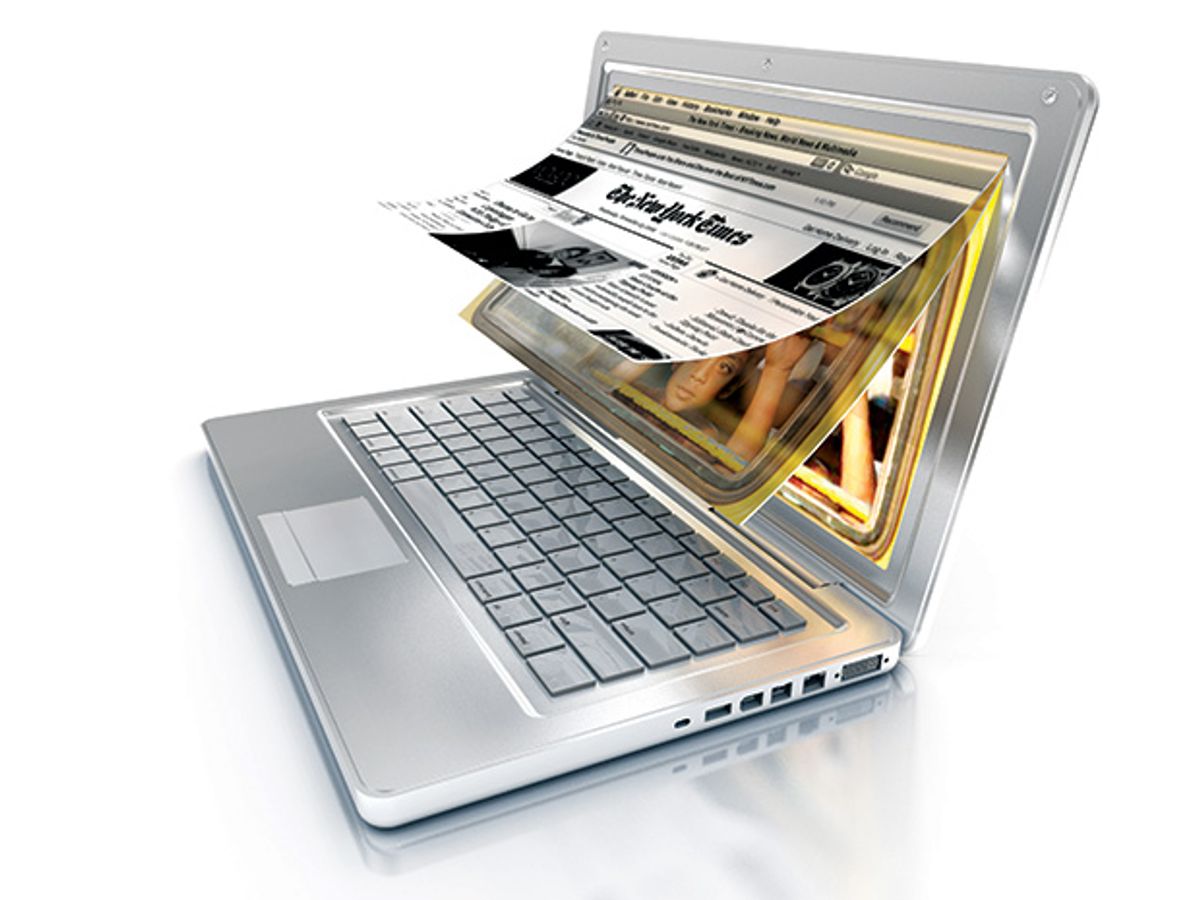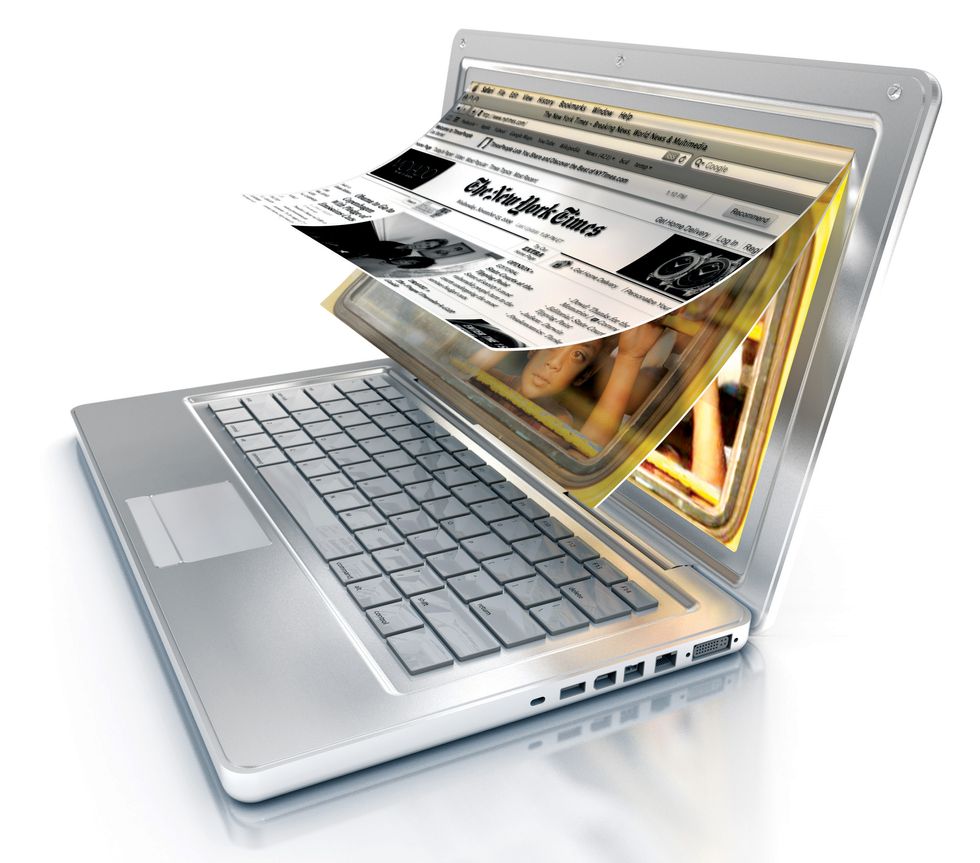Winner: Pixel Qi’s Everywhere Display
Pixel Qi’s screen gives you color when want it, power when you need it

This is part of IEEE Spectrum’s special report: Winners & Losers VII

I’m watching a clip from Slumdog Millionaire on what looks like a standard netbook computer, a scene in which deep blue body paint gives way to luscious saffron-yellow cloth. The picture quality is fine, if nothing special. But then I push a small white button at the side of the display, and it does something I’ve never seen before: The backlight disappears, and the image turns black and white, remaining visible thanks to the overhead lights in the room. I hold up an Amazon Kindle by way of comparison. Both displays have the same crisp grayscale text I’ve come to expect from e-paper.
It seems that at last we have a screen that gives you what you want, when you want it. If you need to extend your battery’s charge or work outside, you can have perfectly good black-and-white text. If power and sunlight are not a problem, you can watch a full-color movie. It could be the most versatile display ever made, and it comes from Pixel Qi Corp., Jepsen’s company in San Bruno, Calif. Jepsen has both an electrical engineering degree and a Ph.D. in optics, and she’s had plenty of experience in the display field—first with Microdisplay Corp., a company she started in 1995 that built liquid crystal on silicon chips for high-definition TVs, and later at Intel, as chief technology officer of the display division.
But she first developed the idea of a dual-mode display while working at the nonprofit One Laptop Per Child Association, which aims to provide educational computers to the poorest children in the world. Jepsen, a cofounder of the organization, was given the task of creating a screen that would use very little power and could be read outdoors, without sacrificing color or video capability. It also had to be inexpensive. Gaining unprecedented access to the big Taiwanese LCD manufacturers, Jepsen was able to create just such a display.
In 2008 she left OLPC to found Pixel Qi, with the goal of creating a similarly versatile screen for mainstream users and manufacturers. In late May 2009, Pixel Qi introduced the first prototype of the 3Qi display and began mass production in December; it expects multitouch tablet PCs featuring the display to ship in early 2010. John Ryan, Pixel Qi’s chief operating officer, says it costs slightly more than a standard LCD screen, but Jepsen maintains that it’ll still be inexpensive enough to go in products priced as low as US $200.
Pixel Qi’s first production display is a 10-inch screen with 1024 by 600 pixels in the full-color mode. It’s the first LCD screen that’s optimized for mobile computing, in which the most common activity is the reading of text—in e-mail, code, or on a Web site. In adequate light, you can easily read and write without wasting any battery power on the backlight.
The design thus runs counter to the tendency in the LCD world to continually improve video quality for the more lucrative television market. For several years, laptops have generally offered the option of a glossy “cinema” display, and while that’s great for watching movies in the dark, it’s virtually useless for working outside, or even in front of a big window.
It’s in such bright light that the Pixel Qi screen shines. When switched to its reflective mode, the 3Qi triples its resolution to 200 dots per inch, as compared to the 167 dpi of a Kindle. True, the contrast ratio is lower, but in our unscientific comparison, it didn’t make much difference. And if you find yourself in poor lighting, you can set the 3Qi’s backlight to its lowest setting, which increases contrast and also adds color.
EXPERT CALLS
“I’ve seen Jepson’s displays for One Laptop Per Child, and I’ve really been impressed with both the technology and its performance.”
— Robert W. Lucky
“I want one!”
— Kenneth R. Foster
But computers, unlike e-readers, require more than just legibility. Because the 3Qi is an LCD at heart, it can easily provide real-time visual feedback—things as simple as an animated, mouse-controlled cursor or letters that appear as soon as you type them. Such simple functions don’t work well with slow-refreshing e-paper. On the Kindle, for instance, “turning a page” takes nearly half a second.
The Pixel Qi display consumes far less power than traditional LCDs, drawing a peak of about 2.5 watts, of which the backlight accounts for about 2 W, says Jepsen. Turn off that light and slow the refresh rate, and you can maintain a static image—such as the page you’re reading now—with just half a watt. That’s still more power than is needed by electrophoretic displays, the generic term for the kind made by E Ink. Electrophoretic screens are bistable, which means that the pixels can maintain a static image powerlessly. But e-paper also requires a higher operating voltage than the Pixel Qi screen, which means that if future e-paper displays offer faster refresh rates, their power advantage will likely wane.
The prototype 3Qi display gives Jepsen’s off-the-shelf Acer netbook an extra one to two hours of battery life, depending on what she’s doing. But there’s a lot of room for improvement, she says, in the ways a netbook or tablet PC can take advantage of the new screen. “Look for dramatic power savings in 2010 for devices using our screens,” she says, hinting that they should be an order of magnitude better.
Pixel Qi has also beat E Ink to color. In the Spectrum conference room, Jepsen cranks the backlight all the way up to show off the color and video playback. The video is perfectly watchable, although it probably wouldn’t be your first choice if movies were the primary application. The colors don’t look as saturated as they would on a glossy cinema display, but at least the blacks in dark scenes are very black. In other words, the Pixel Qi screen offers an excellent compromise for a class of gadgets defined by their low-cost versatility.
The root of that compromise is a technology dating to the 1970s, in which transmissive light (from a backlight) and reflected light (from the surroundings) combine to create a “transflective” image. But unlike conventional transflective LCD screens, such as the ones in Jepsen’s Toshiba laptop or an iPhone, the Pixel Qi screen really excels in the reflective mode. Most reflective screens have poor performance because the light gets absorbed or reflected in the many layers that make up an electronic display. With paper, the gold standard of readability, “the ink is right on top, immediately interacting with the light that hits it,” explains Jim Larimer, a consultant who used to develop display technology for NASA. “[Jepsen] is very good, and she’s worked out a tough problem.”
To improve the reflective mode, Pixel Qi reengineered and tweaked nearly every light-absorbing layer in the LCD—polarizers, optical retarders, filters, masks, electrodes, and the liquid crystals themselves. A conventional transflective screen divides each square pixel into rectangular red, green, and blue subpixels, then further divides each subpixel into transmissive and reflective areas. In the reflective subpixels, you lose light as the rays pass through the numerous optical layers on their way in, and again after they reflect off a mirror and make their way out. That’s why an iPhone screen outdoors looks washed-out, with very little contrast. Pixel Qi sidesteps one source of loss by ditching color filters. In each of the rectangular subpixels, nearly all the available area is devoted to reflection. Because each subpixel is basically a mirror, the screen’s reflectivity is about as high as it can get.
To allow for the transmissive mode, each subpixel contains a pinhole that lets colored light pass through. The big technical question is just how Pixel Qi squeezes so much light through such a tiny pore. Jepsen won’t say how she does it. Perhaps part of the answer can be gleaned from her patent application for the old One Laptop Per Child display. The application indicates that you can improve efficiency by using a colored backlight—for instance, a red light-emitting diode to illuminate red subpixels—rather than straining white light through color filters.
“It’s a bit like an orchestra of all these layers and films and fluids and surface treatments to get the light to do magic for us,” says Jepsen. The payoff, though, is obvious: Because it leaves most of the screen area for reflectivity, the Pixel Qi display looks much better in natural light than any other LCD.
“For [Jepsen’s] new product, I think they emphasized more on the outdoor readability to compete with e-readers,” says Shin-Tson Wu, a professor of optics at the University of Central Florida, in Orlando, where he leads the Liquid Crystal Displays Lab. Wu was impressed with a demonstration he saw in a hotel room earlier this year. “Bright light was streaming through the windows, and the display just looked great. I think it’s a wonderful product.”
To be sure, new display technologies have had a spotty record, often taking longer to get to market than promised. Take the organic LED, that ultrathin, crisp, and perpetually hyped display technology. It was demoed and talked up for two decades, and by the time it began to trickle into real products, the original patents had all run out. Electrophoretic displays pioneered by E Ink took nearly nine years to get ready for prime time. “New display technologies take on average 20 to 30 years to get into mass production,” says Jepsen. “It’s way too long.”
That’s why Jepsen chose LCDs, a technology with a huge manufacturing infrastructure already in place. She even mandated that it should be possible to fabricate Pixel Qi’s display on existing LCD lines, using available materials. So far, this pragmatic approach seems to be paying off. Jepsen’s prototype passed early reliability testing, and the industry doesn’t so much as cock an eyebrow when she says it’s easy to make, that many companies are gearing up to make it, and that it’ll get made in a matter of months. “I have very strong evidence that at least one major OEM [original equipment manufacturer] is ready to implement the Pixel Qi display in a netbook, as long as technical specs are met and business commitments are honored,” says Dave Blakely, an electrical engineer by training and the director of technology strategy at the design firm Ideo.
Jepsen is already looking at ways to improve her screens, such as adding touch-sensitive overlays and flexible back planes. Pixel Qi has yet to demonstrate a touch screen but has confirmed that the first consumer device will feature one. It remains to be seen if the added cost and the extra light absorption of such an interface might ultimately hurt the technology’s two biggest selling points. But manufacturers have already overcome similar hurdles to create other touch-based e-readers.
Jepsen’s display needn’t do everything. It’s enough that its mix of capabilities doesn’t restrict it to niche environments or uses. “Ultimately, something like a Kindle will be short-lived. People are not going to want to have five different gadgets,” says Heikenfeld. “Pixel Qi might be doing very well for a really long time.”
“A display that combines the best of high-end LCDs—especially when you’re watching entertainment or playing a game—combined with some of the best features of an e-reader?” says Blakely. “It’s incredible. It’s dynamite.”
This article originally appeared in print as “The Take-Anywhere, Do-Anything Display.”
For all of 2010’s Winners & Losers, visit the special report.
To Probe Further
In October 2000, IEEE Spectrum bet against reflective LCDs in “A Bright New Page in Portable Displays” [link to IEEE Xplore].


